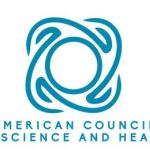In the first few days of the new year, the rules governing customer risk and the responsibilities of ski resorts, particularly in Colorado, have undergone some noteworthy clarification.
Food & Nutrition
Actress Zooey Deschanel has a new startup — The Farm Project. In her latest video episode she urges consumers to stop buying produce from the grocery store — unless it's organic.
In America, we have abdicated our personal responsibility regarding food to the government. With FDA and USDA we are guided by bans, subsidies, and taxes, lest we be rudderless about how to eat breakfast.
If there's one sector of the health and fitness market that's experiencing explosive growth, it's yoga.
Some find it strange, while others, simply fascinating. And others still put it on their dinner menu because they're drawn to its preparation in a macabre sort of way.
There’s a new scary poison in town. It comes wrapped in a thin, shiny can, and tastes like someone mixed cough syrup and Coke and then poured it over a few kilos of sugar.
I’m talking, of course, about energy drinks.
Scientific research, folks in white lab coats, gleaming laboratories, occasional Eureka moments interspersed with hours of work – still sounds interesting if not glamorous. But sometimes, science requires more dedication, more sacrifice.
Following a vegan diet has become increasingly widespread in affluent countries — Britain saw its popularity rise quickly in 2017, for example.
The business of sleep continues to break new ground. To what end, that's hard to say.
Eggs have been a dietary bugaboo for decades because of the cholesterol within their yolks.











